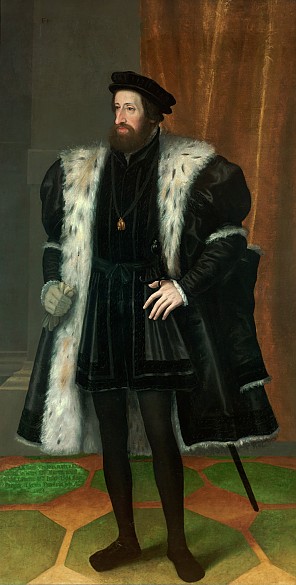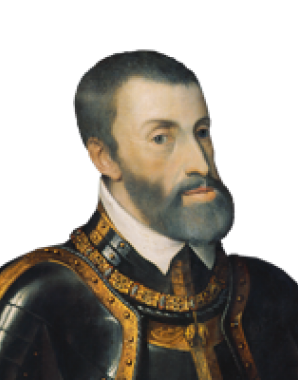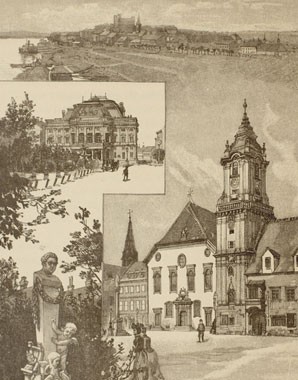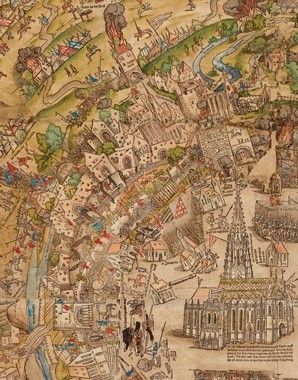Ferdinand I: new crowns for the Habsburgs
The Battle of Mohács against the Ottomans fought on 29 August 1526 brought a sudden twist of fate. Ferdinand’s brother-in-law, the young King Louis II of Bohemia and Hungary, fell on the battle field.
The provisions of the Vienna inheritance contract that Ferdinand’s grandfather Maximilian I had concluded with the House of Jagiello duly came into effect, far earlier than expected. The crowns of the major kingdoms of Bohemia and Hungary were now within Ferdinand’s grasp.
However, first Ferdinand had to be elected, as until then he had merely been accepted as prospective monarch. The self-confident nobilities of both groups of dominions insisted on their chartered right to elect their sovereign.
In Bohemia Ferdinand was confirmed as king without complications in 1526, having been elected by the Estates for want of any other serious candidates. At first underestimated by the Bohemian magnates, Ferdinand’s ability to assert his authority led to a revolt, which was suppressed in 1547. However, the latent antagonism between the predominantly non-Catholic nobility and the House of Habsburg continued to supply further fuel for conflict.
In Hungary, where the Ottomans had overrun and conquered parts of the old kingdom, the situation was more complicated. The Habsburg’s bid for kingship was challenged by the Hungarian aristocrat János Zápolya, who had set himself up as anti-king in opposition to the foreigner Ferdinand. Supported solely by a part of the nobility, the latter was only able to take possession of north-west Hungary; the eastern regions of the kingdom remained outside his control.
The Hungarian nobility expected that Ferdinand, backed by a network of European dynastic connections, would be a strong king and put a stop to the Turkish expansion, perhaps even driving them out of the kingdom again. However, these expectations were disappointed. Reliant solely on the means that accrued to him from his sovereignty over the Central European territories, Ferdinand did not have the wherewithal to fight an extensive campaign. He thus had to depend on support from Spain, yet his brother Charles V remained astonishingly inactive in the face of this massive threat to the Habsburg dominions in Central Europe. The Turkish advance proceeded rapidly, with the old capital Ofen (Buda) falling into the Sultan’s hands in 1541, followed by Gran (Esztergom), the seat of the head of the Church in Hungary, in 1542, and the old coronation city of Stuhlweissenburg (Székesfehérvár) in 1543. Of the old medieval kingdom only the north (roughly equivalent to present-day Slovakia) and the west together with the western parts of Croatia, which was united with Hungary, remained in Ferdinand’s hands, with Pressburg (Pozsony/Bratislava) becoming the new capital of the Habsburg half of Hungary.
In 1529 the Turkish army reached the gates of Vienna for the first time. It was only the unexpectedly early onset of winter that year that forced the Ottomans to abandon their siege and withdraw. The Turks had now impressively demonstrated that the Habsburg capital lay within the reach of their armies. The fortifications at Vienna were subsequently modernized and strengthened as a matter of urgency.
















